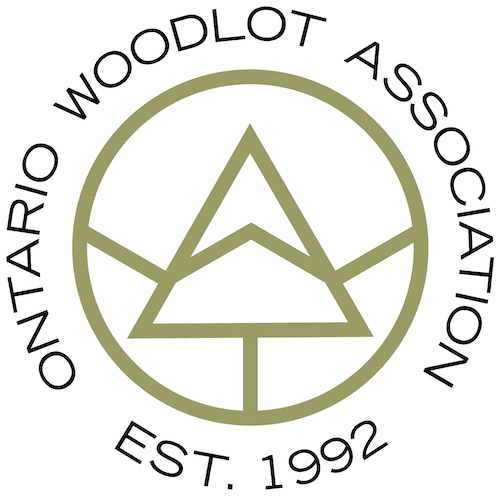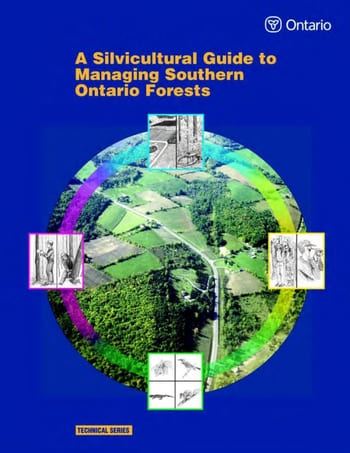A. Since the late 1940s, the province of Ontario has granted municipalities the authority to regulate tree cutting in privately owned forests. Most southern Ontario municipalities now have these bylaws in place. They were originally intended to control the clear-cutting or near clear-cutting of woodlots which was common in southern Ontario at the time. These practices are generally not appropriate for the hardwood and mixedwood forest types found in southern Ontario. Today’s tree bylaws also usually promote good forestry practices.
Q.1 What are tree bylaws?
Q.2 Why do we need tree bylaws?
A. Here are just some of the reasons:
- Tree bylaws, educational programs and other initiatives are all part of a solution to maintain and enhance our natural environment and quality of life (for us and for future generations);
- A tree bylaw can reduce unfair competition from loggers who may conduct questionable forestry practices for financial gain;
- It is important to note that Tree bylaws do not prevent landowners or loggers from earning a living from private forests (or from cutting wood for their own use or practicing good forest practices);
- Tree bylaws enacted in adjacent jurisdictions can bring some of the worst loggers to your municipality;
- Competing land uses are putting additional pressure on private forest; and
- Poor forestry practices have a negative impact on forest productivity and long-term revenue, wildlife habitat, forest health, water quality, soil protection and the local forest industry.
Q.3 How do tree bylaws work?
A. Tree bylaws have traditionally worked by specifying that trees of commercial value must reach a certain minimum size before they are harvested (by setting minimum diameters of circumferences for such trees). These diameter limits prevent clear-cutting or very heavy cutting, but are not intended to be good forestry practices. Most municipalities require people to apply for a permit to cut or harvest trees.
A good forest conservation or tree protection program has a strong education and awareness component. Municipalities should work with local forest stewardship agencies and organizations to promote good forestry practices and sustainable approaches to forest management.
Q.4 Do all municipalities have tree bylaws?
A. No. Check with your municipality to find out if there is a tree bylaw prior to doing any commercial cutting on your property. See the link on this site to “List of Municipalities”
Q.5 What is the difference between a tree bylaw, a forest conservation bylaw, a private tree bylaw or a tree protection bylaw?
A. These are all municipal bylaws that restrict or prohibit the cutting of trees. Generally speaking, the term tree-cutting bylaw is used in older bylaws, whereas forest conservation bylaw is used in more recent bylaws enacted by Counties or Regional Municipalities. Lower tier municipalities also use various names such as tree protection bylaws or private bylaws.
Q.6 What are the exemptions to a tree bylaw?
A. Exemptions are situations under which the tree bylaw does not apply. Tree bylaws will contain both legislated exemptions, which are exemptions listed directly in the Municipal Act, as well as other exemptions that have been included by the municipality.
Many tree bylaws will include exemptions for:
- Trees cut for “own use by a person who has been the registered owner of land for at least two years” (“own use” does not include any sale, exchange or other disposition of the trees that are cut);
- Rights or powers of any provincial legislation;
- Rights or powers of Ontario Hydro or of any agency, board or commission that is performing its functions for or on behalf of the Crown;
- Trees growing upon any highway or upon any opened road allowance;
- Trees destroyed in order to erect any building, structure or thing in respect of which a building permit is issued;
- Trees planted and maintained for the production and sale of Christmas trees;
- Trees planted and maintained for commercial fruit or nut orchards;
- Trees cut by a person licensed under the Surveyors Act to engage in the practice of cadastral surveying or any person in his or her employ while making a survey;
- Trees on land described in a license for a pit or quarry or a permit for a wayside pit or wayside quarry issued under the Aggregate Resources Act;
- Trees destroyed in order to lawfully establish and operate or enlarge any pit or quarry on land that has not been designated under the Aggregate Resources Act; and
- Trees cut under Section 40 (Site Plan Control) or Section 50(6) (Subdivision Agreement) of the Planning Act containing provisions relating to tree cutting.
Q.7 What if I am logging my own property?
A. Most tree bylaws have a number of exemptions. One common exemption is trees cut for “personal use.” This does not include any sale, exchange or other disposition of the trees that are cut. However, for commercial logging, there are generally two main options available for harvesting:
- You may choose to cut trees in accordance with good forestry practices. There are many options available under good forestry practices. In general, a silvicultural prescription should be developed, and the trees should be marked prior to harvesting by someone who is qualified to do so. The guidelines for good forestry practices are outlined in the Silvicultural Guide to Managing Southern Ontario Forests (OMNR 2000). Additional information about good forestry practices is available from the Ontario Professional Foresters Association in Bulletins #1 and #10.
OR - You may cut any trees that are over a certain size (diameter) listed in the tree bylaw. (Note: that some municipalities no longer allow this type of harvesting.) Some tree bylaws have an additional requirement that you must not cut the forest below a certain density (e.g., 65 sq ft. per acre, or 15 sq. m per ha). Note: This method of harvesting trees is a poor forestry practice, but it does prevent the total devastation of a forest, and simplifies enforcement of a bylaw. Diameter limit cutting is not sustainable and degrades the quality of the forest. The overcutting that often results and the reduced genetic quality from diameter limit cutting will provide less and less revenue from the forest over time, as well as reducing ecosystem integrity. This method is not recommended.
Q.8 What if I am a logging contractor?
A. You must abide by any tree bylaw within a municipality you are working in. Make sure you get a copy of the tree bylaw and understand the requirements fully before harvesting.
Q.9 If cutting to a diameter limit (circumference) is not considered good forestry practice, then why is it an option under some bylaws?
A. Although diameter limit cutting is considered to be high-grading (poor forestry practice), most tree bylaws limit the extent of high-grading and prevent inappropriate clear-cutting. Tree bylaws have been traditionally written using minimum diameter limits because it is simple to understand and simplifies enforcement of the tree bylaw.
Over the years, most tree bylaws have been written to encourage good forestry practices, but continue to provide the option of using the diameter limit.
Q.10 What if I want to clear forested land or otherwise cut trees outside of the provisions in the tree bylaw?
A. Most bylaws include an exception process whereby you can apply to the municipal council for an exception to the tree bylaw for your proposed tree cutting or forest clearing activity. For example, if you wanted to cut a woodlot in order to expand an agricultural field, you would likely have to go through the minor exception process.
Q.11 Where can I get more information?
A. For more information about tree bylaws in your area, contact your municipal office.


